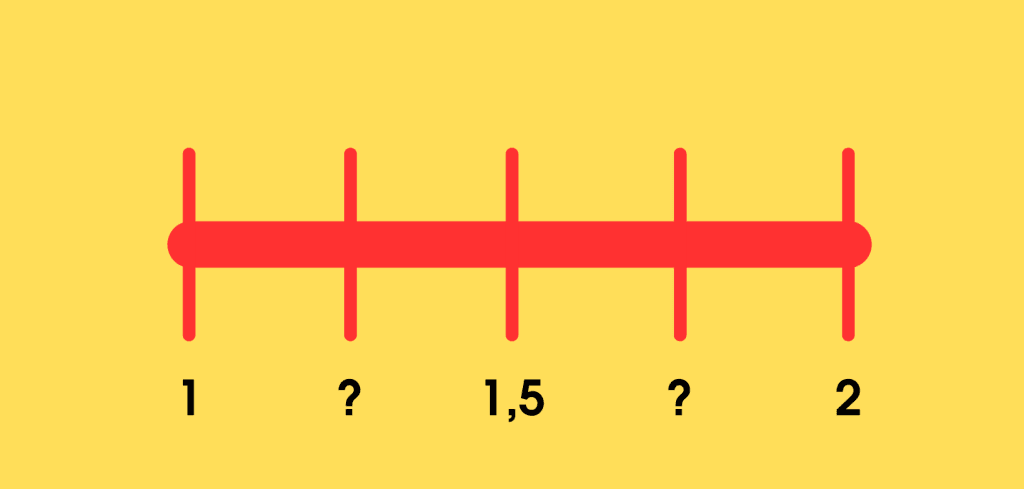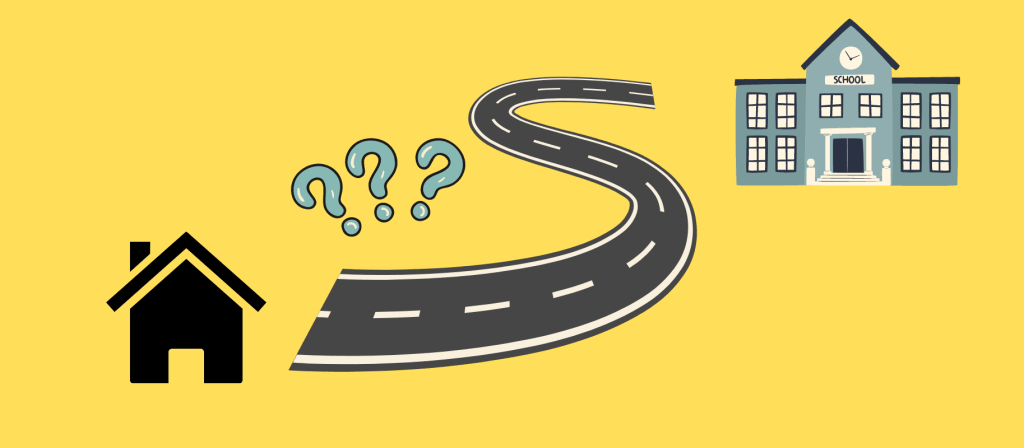Common Core Math Standards
reviewed by Jo-ann Caballes
Updated on July 22, 2024
Math isn’t an easy field of knowledge — it requires that kids dig deeper into the subject, investigate, and try to understand topics (instead of simply memorizing them). Luckily, there are math wizards who can help untangle all the math complexities.
After decades of solving math problems a certain way, teachers now use a new and improved method — Common Core math. Although it may seem complex to some parents, the importance of this approach in the US can hardly be diminished. But what’s Common Core math in the essence? And what are its benefits? Let’s demystify.
What’s Common Core math?
The Common Core math is a set of standards for math education that specifies the knowledge and skills students should acquire. The three main focal points are coherence, focus, and rigor. The system claims children should cover fewer topics but study them in depth.
Instead of choosing the first and easiest solution, Common Core mathematics pushes kids to question the “why” behind each equation. For example, after solving a task, the kids don’t just move on to the next question; they have to figure out why the solution they picked worked in the first place.
At this point, you probably wonder, “Why choose mathematical practices in the Common Core style?” The answer is simple: these standards help kids build critical and analytical skills!
Even despite many benefits, some children and parents find these practices complex. In fact, this math standard really encourages understanding the concepts instead of simple memorization, which is really more complicated at the first stages. But think about the benefit your kid gets in the long run…
Tutors at Brighterly also use Common Core mathematical practices. Teach to help kids understand — it’s their philosophy. This approach, combined with the careful tutor selection and personalized 1:1 lessons, creates a friendly and cooperative atmosphere where students can grasp even the most complex ideas. Taking into account all its benefits, why not try studying at Brighterly?
How does Common Core math work
First and foremost, Common Core math takes a narrower approach to subject concepts than traditional math. Additionally, it’s a progressive strategy, meaning that each new lesson is built on past knowledge. Another feature is the strong emphasis on real-world problems and cases. This specificity makes kids apply their wisdom practically. All in all, Common Core is more about understanding and less about plain memorization.
The initiative was developed in 2010 and has been adopted in 14 US states since then. Considering the growing numbers, the Center for Education Policy Research states that 82% of math teachers are now adjusting most of their resources to fit the Common Core math practice standards. Obviously, we cannot oppose the trend.
How to do Common Core Math with Brighterly
Some parents find the Common Core math curriculum complicated and cumbersome. But in fact, it isn’t that way. Common Core math may seem complex compared to the traditional flow due to its focus on understanding. Some topics can be covered for weeks or months, which, however, ensures better material adoption.
Here’s what Geillan Aly, founder and CEO of Compassionate Math, has to say about the Common Core math:
“Parents commonly feel uncomfortable with Common Core math. But the main reason for this is that our generation was taught using algorithms and rules without providing meaning.”
As a parent, if you want to help your child with their math, ask them to explain what they understand. Have them show you what they learned and what method they used. This way, you’ll be able to figure out the idea they need help with.
In Brighterly, we believe in the power of Core standards and their ability to change how well children succeed in the subject.
Below, we list the basic math Core curriculum we adopted for our students.
Common Core Math for Grades 1-5
Numbers & operations: grades 1-5 Common Core
- Counting & cardinality: Children develop a basic sense of numbers; they learn to understand what numbers are, how they work, and grasp counting principles.
- Basic algebraic concepts: Kids learn to subtract, add, divide, and multiply. In early stages, they work with numbers up to 100.
- Introducing fractions: They start working with fractions as part of a whole.
Measurement & data: grades 1-5 Common Core
- Measurement: Children first understand the units of measurement, define basic time and length.
- Data: They learn to work with data: collect, organize, and interpret it using graphs and charts.
Geometry: grades 1-5 Common Core
- Shapes: This is the first introduction to geometric concepts. Children recognize and describe shapes, understand their attributes, and compose and decompose them.
Common Core Math for Grades 6-8
-
Ratios & proportional relationships: During the Common Core math lessons with Brighterly, children try to understand proportional relationships and solve ratio and rate problems.
-
The number system: Now, students extend their understanding of numbers to include positive and negative integers, fractions, decimals, and percents.
-
Expressions & equations: They learn to write and solve equations and inequalities, understand expressions, and analyze relationships.
-
Functions: This is when the first functions are introduced. Children learn what functions are and try to evaluate and compare them.
-
Geometry: They extend their previous knowledge of geometry to understand angles, congruence, similarity, and transformations.
-
Statistics & probability: Schoolers learn to analyze data, make inferences and conclusions, and understand probability.
Common Core Math for Grades 9-12
- Algebra: It’s when students grasp advanced algebraic concepts like linear, quadratic, and exponential functions.
- Functions: Now, children can deepen their understanding of functions and their properties by studying trigonometric functions.
- Geometry: They learn advanced geometric concepts such as geometric proofs, three-dimensional figures, and geometric transformations.
- Statistics & probability: They explore advanced statistical methods, including data analysis, probability distributions, and statistical inference.
- Modeling: Schoolers actively apply mathematical concepts to real-world situations and solve complex problems.
As you’ve probably spotted, most topics covered throughout Common Core math practices at different grades repeat themselves. That’s what the strategy is about — constant building on the available knowledge foundation.
However, Common Core is more than just a list of topics. Here’s how Brighterly embraced its fundamental standards.
- Understand, not memorize: This is the central concept we’ve adopted and are continuing to work on. We encourage our schoolers to ask “Why,” not “What.” This way, they learn to understand the process behind each topic and get better overall results.
- Adaptive learning: We value each student’s individuality and know that learning styles can vary (after all, diversity is strength). That’s why our tutors are trained to adapt to student needs and change the workflow as kids progress or struggle with something.
- 1:1 tutoring: We’re firmly convinced that each child should receive all of the tutor’s attention. So, personalized studying is the only way to guarantee this. With 1:1 tutoring, we try hard to create a healthy, friendly atmosphere and encourage student creativity and interest.
All in all, Brighterly is a fast, secure, and foolproof way to grasp and make the first steps in Common Core mathematics without stress. And the flow to start with is quite simple, too.

Common Core Mathematics standards
The main specificity of Common Core math is its concentration on a set list of skills and concepts students should acquire throughout their studies. According to Common Core standards, math learners are about to adopt the concepts in an organized way during the grades, with one topic gaining multiple applications. The main point of any task is solving real-world problems.
Now, let’s dig deeper into those concepts and see what’s covered with some Common Core math examples.
Teaching to understand problems
Think about the case when your child first encounters some topic. What do they do then? Right, they move to solve the problems attached. After all, it’s what they got their marks for.
This approach is a huge concern. According to all Common Core standards, students should first understand the topic and have its clear explanation in their heads and only then move to solving related tasks. Why does it matter?
- Children can hardly remember and reproduce the information they mindlessly memorized at some point in the past. So probably, yes, your kid won’t be able to replicate their current knowledge in 5 years’ time.
- Without proper understanding, kids can hardly build on what they’ve learned and adopt more complicated topics. Thus, they are less likely to succeed in the subject in the long run.
So, what’s the process of teaching common core math? In particular, it encourages children to view similar problems, understand their relation, and break them down into minor problems. Kids should also monitor the problem-solving process and adjust it as needed to find the best-fitting solution.

Above, you can see one typical example of Common Core math problems for 4th to 6th math classes. It teaches kids a few things:
- Understanding relations between numbers (which is a solid knowledge base to use in future studies);
- The actual subject — learning to define and write decimals.
Thinking quantitatively and abstractly
This means that children should make sense of quantities and use them when solving problems. So, actually, the point entails two Common Core standards for math:
- think outside of the given situation and learn to represent it symbolically or decontextualize
- and, also learn to find the context or contextualize.
Let’s take this task as an example:
| A bakery sells muffins in boxes of 6. Each box costs $12.50. If Mary wants to buy 18 muffins, how much would she need to pay? |
Let’s discuss the problem in terms of contextualization first. This means that children should step away from the problem and get a kind of parachute view of it. First, they should understand that the price listed — $12.50 — is given per box (which contains 6 muffins). So, the right solution is to calculate how many boxes we need related to the number of muffins in one box.
The decontextualization works the opposite way. According to it, children shouldn’t be distracted by an abstract task description (all the muffins affair meant). Instead, they should learn to define an equation hidden behind the story: 6x = 18 muffins. The cost per box is $12.50, so the total sum Mary must spend is 12.50x.
Constructing and critiquing viable arguments
Common Core mathematics standards demand that kids use previously learned information to build on and explore their ideas. They should make guesses and produce fresh ideas along with their current knowledge. Similarly, they should be able to explain their point to other students and delve into why some things work and others don’t.
The youngest learners usually try to explain concepts with elementary tools like drawings, diagrams, and actions. As they grow, they start analyzing how their ideas work in different situations.
Long story short, they should learn to define working solutions from failures and argue why they think so.
Modeling with mathematics
Each student has a different learning style, but one thing is clear for any of them — having a real-world example in mind is the best way to memorize something and better apply it in the future. Knowing that 1000 meters equals 1 km is not enough. Kids should understand what those things mean when on a journey. According to Common Core, this applies to each and every concept.
Delving further into the above example, the teacher will likely start explaining the topic by describing the distances children often have to cover. For example, they can try to describe the length of a schoolyard or ask kids to define the way they travel from home to school.

Visual tools like maps, diagrams, and scale modes work equally well as examples of Common Core math problems. They show how small distances can be measured in meters and how highways cover kilometers. It helps kids understand the practical importance of the new units and learn where to apply them.
Talking about more advanced examples, schoolers may apply proportional reasoning to plan a school event or use functions to describe how the quantity of interest is interconnected with another. So, in the end, those children who know how to apply their knowledge are more comfortable making assumptions, developing their theories, and breaking down complex questions into simple, manageable tasks.
Using the appropriate tools
Hundreds of tools help solve Common Core math problems or apply solutions to real-life situations. However, the number of existing tools supersedes the number of students who know how to use them.

Ok, so during regular math classes, teachers just say which tools to use. But what if kids learn to find those tools on their own? For instance, teachers can ask them to compile a list of resources needed to work with some math topic. This works for elementary to middle school. As for senior learners, they may be asked to find the best resources on a topic (like books or websites).
Building precision
Precision is about learning to communicate explicitly and clearly with others. Students should be able to provide definitions and reasonings for the concepts they learn to show they really understand them.
In the early stages of education, children can build precision by explaining what they think about a symbol or math problem to their peers. Their attempts may seem humble and distorted at first, but they will improve as children mature. In high school, they learn to provide complex definitions and discuss advanced concepts that require much reasoning from their side.
Building dialogs is another powerful technique. One student asks for the meaning of a concept they don’t understand, and classmates try to explain Common Core Math things to them — that’s how it works.
Thinking structurally
Structures are everywhere in math, but learning to find them requires much experience. In the beginning, students first understand that 6+4 equals the same as 7+3. Then, they build on their knowledge and learn to discern shapes by the number of angels — now, they can even sort those shapes.
Later, students will be proficient enough to see more advanced things like algebraic expressions as entities composed of several objects. Such systems aren’t built in a day (or year), but once they adopt them, math becomes a more straightforward subject to study.
Learning to find regularity
Common Core mathematics teaches students to pay attention to repeated calculations and make conclusions once they spot a repeated pattern. For example, in beginner school, kids learn to add numbers. Say, they add 5 five times: 5+5+5+5+5. As they later learn to multiply, they start realizing that 5*5 is actually the same thing.
Let’s take a more advanced example. Students might notice when expanding expressions like (x – 1)(x + 1), they cancel out terms and get: (x – 1)(x + 1) = x^2 – 1. This pattern helps them understand how algebraic expressions simplify and form patterns.
Overall, this regularity standard helps students find similar concepts and repeated expressions. As they break a single math problem into smaller steps, they spot how things work and delve deeper into the subject — just what the Common Core encourages.
Conclusion
Now that you know what Core math is and how it works, you can guess why its standards are gaining more and more traction. With its principles, your child grasps the real-world application of usually math problems. So, yes, they probably won’t ask you, “Where will I need those acquisitions in the future?” Not to mention their overall better progress in the subject. The better understanding — the more chances to succeed; it’s a golden rule.
So why not switch to that popular Common Core math today? Book your first lesson at Brighterly and see what the thing is all about.















